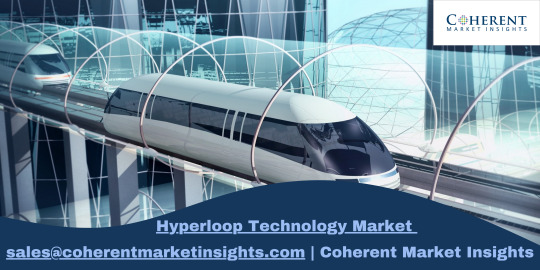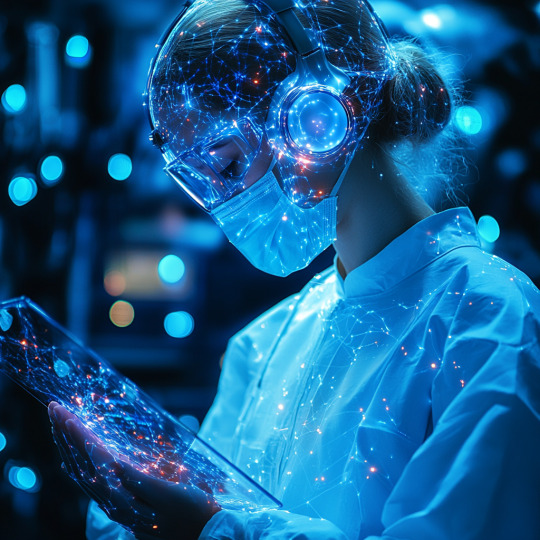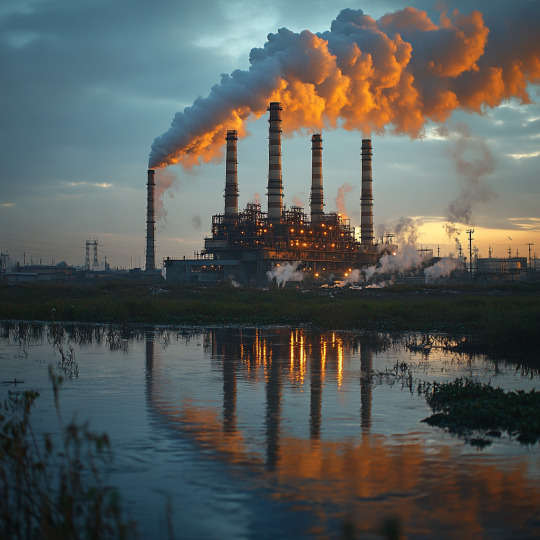#Hyperloop Technology Market
Explore tagged Tumblr posts
Text
0 notes
Link
0 notes
Text

The global hyperloop technology market has garnered significant attention in recent years, promising a revolution in transportation. Read More: https://cmi-reports.blogspot.com/2023/06/exploring-global-hyperloop-technology.html
#coherent market insights#Smart Technologies Industry#Hyperloop Technology Market#Transportation#High-speed#Infrastructure#Magnetic levitation#Vacuum tube#Propulsion system
0 notes
Text
United States hyperloop technology market size reached USD 620 Million in 2024. Looking forward, IMARC Group expects the market to reach USD 17,800 Million by 2033, exhibiting a growth rate (CAGR) of 45.3% during 2025-2033. The inflating need among key players for offering a glimpse into the future of high-speed and sustainable transportation is primarily driving the regional market.
#United States Hyperloop Technology Market Report by Component Type (Tube#Propulsion System#Capsule#and Others)#Speed (More than 700 kmph#Less than 700 kmph)#Carriage Type (Passenger#Cargo/Freight)#and Region 2025-2033
0 notes
Text
Hyperloop Technology Market Updates, News, Increasing Growth Rate 2024 to 2030

The qualitative report Published by Exactitude Consultancy research on the Hyperloop Technology Market offers an in-depth examination of the current trends, latest expansions, conditions, market size, various drivers, limitations, and key players along with their profile details. The Hyperloop Technology market report offers the historical data for 2018 to 2023 and also makes available the forecast data from the year 2024 to 2030 which is based on revenue. With the help of all this information research report helps the Market contributors to expand their market positions. With the benefit of all these explanations, this market research report recommends a business strategy for present market participants to strengthen their role in the market. This report analyzes the impact of the Covid 19 pandemic on the Hyperloop Technology Market from a Global and Regional perspective.
The global hyperloop technology market size was valued at USD 2.06 billion in 2023, and projected to reach USD 45.93 billion by 2030, with a CAGR of 16.18% from 2024 to 2030.
For The Full Report Click here:
https://exactitudeconsultancy.com/reports/21802/hyperloop-technology-market/
#Hyperloop Technology Market Analysis#Hyperloop Technology Market Business#Hyperloop Technology Market Trends 2024-2030#Hyperloop Technology Market Size#Hyperloop Technology Market Growth#Hyperloop Technology Market Forecast 2030#Hyperloop Technology Market Technology#Hyperloop
0 notes
Text
Imagine that it is May 2025. U.S. President Donald Trump has just finished bulldozing the entire U.S. interstate system, because Elon Musk decreed that highways are wasteful and the country should run on hyperloops. No hyperloops currently exist, and the entire nation requires the interstate system to function, but that is deemed irrelevant. For months prior, Deep Interstate tried desperately to draw attention to the range of public needs that roads fill, how critical highways are to national security, and how rash it would be to squander the decades of bipartisan work—and the billions of taxpayer dollars—that went into constructing them. But Deep Interstate has been labeled untrustworthy, existing only to protect its own interests and undermine the administration.
By July, hyperloop construction is facing years of delays. Construction supplies are stuck in warehouses while workers are consistently late or absent: The local roads have become too congested to allow the efficient passage of even critical materials or employees. To transport supplies long distances, beleaguered investors discover that they will need to build a giant system of high-speed roadways connecting localities.
Bulldozing the highways, it turns out, has catastrophically complicated hyperloop expansion—even though those highways had never been designed to support hyperloop construction, let alone optimize it. But hyperloop experts maintained that efficiency and innovation demanded their destruction.
If that hypothetical sounds far-fetched, consider this: One month ago, the Trump administration was gifted a U.S diplomatic infrastructure spanning 271 embassies, consulates, and missions, as well as a foreign assistance infrastructure reaching more than 170 countries through approximately $68 billion in foreign assistance funding in 2024 alone. The United States’ vast reach was no accident: Building it required half a century of bipartisan collaboration and hundreds of billions of taxpayer dollars. Only one country enjoyed a larger footprint: China.
Despite that, through a breathtaking failure of imagination and an even greater failure of checks and balances, this administration has terminated U.S.-backed agreements across thousands of markets and dozens of sectors, showing no concern for immediate and catastrophic impacts, legality, constitutional authorities, the long-term destabilization of emerging markets, or even the safety of its own employees.
As of Feb. 25, anywhere from 5,800 to 14,000 U.S. Agency for International Development (USAID) staff have been placed on leave or laid off. A claimed “waiver” program for USAID and State Department foreign assistance programs is non-operational in practice. Embassies, where most employees are local staff, have been ordered to make cuts. The country’s hard-won reputation as a reliable, trustworthy, and rule-abiding partner is teetering on the brink. It’s bulldozers all around.
Such destruction is a seismic, unforced error. We are at the advent of a new technological age of artificial intelligence, in which the United States must seize every opportunity to protect and expand its competitive advantage. Scale is the U.S. government’s untapped superpower.
By treating the country’s vast diplomatic presence and foreign assistance infrastructure as expendable “soft power,” the Trump administration misses two hard truths about protecting geopolitical power in the age of AI: first, that speed depends on scale; and second, that models require markets.
The United States’ untapped superpower in the AI race is not the so-called innovation economy, or an unregulated market. Those have been leveraged. Rather, it is the sheer scale of the U.S. government’s global presence, and how that could be used to turbocharge America’s global leadership in the AI race.
Moreover, the ability to build markets—not just individual AI models—will determine which nation’s technology dominates globally. Supporting the early and successful deployment of basic, useful AI systems across global markets will be key to protecting market entry opportunities for American AI technologies for decades to come.
The United States’ sturdy global presence provides a ready-made distribution network for AI innovation and adoption, particularly in critical sectors such as global health, food security, and climate resilience—areas where AI can drive immediate and transformative change.
Outside of better-known humanitarian and public health work, U.S. foreign assistance programs also help support anti-corruption initiatives, investigative reporting, STEM training, local entrepreneurship, free and fair elections, and rule of law—all of which underpin the political stability and due process that enhance opportunities for long-term market growth and diminish market entry risks for U.S. companies.
Finally, protecting robust U.S. diplomatic engagement at local levels optimizes for the country’s unusually large embassies: More staff on the ground means broader coverage and deeper insights than most foreign ministries can gather.
Broad reach also ensures that the United States’ scale is being used to benefit broader U.S. private sector interests. AI incumbents and Big Tech can hire local offices, lawyers, and lobbyists to support their expansion into new markets (and the new sources of data they offer for model training). Key benefits of the U.S. government’s scale accrue to “Little Tech.” The country’s start-ups and innovators are better equipped to balance the scales when taxpayer investments do the heavy lifting of building awareness of U.S. business, developing trust with local governments, and supporting broad private-public partnerships that facilitate rapid scaling.
While U.S. foreign assistance was not designed to support the expansion of these emerging technologies, it will be far faster to optimize for such expansion over this existing infrastructure. Financing structures, legal registrations, banking agreements, compliance protocols, training programs, public-private partnerships, growth strategies, and expert staff: These mechanics are core to foreign assistance implementation, and they could be adapted with relative speed to support AI deployment across markets. Notably, 11 of the United States’ top 15 export markets have been the recipients of U.S. foreign assistance funding to support their development.
A truly efficient scaling strategy for American AI would capitalize on intense recent efforts to modernize both USAID and the State Department; years of work laid important groundwork that should not be wasted. All of the country’s embassies now employ officials charged with cyber and digital policy in alignment with a new global foreign-affairs strategy expressly designed to reassert U.S. leadership in the digital age. USAID launched a new digital strategy in 2024 to achieve a similar transformation.
In addition, AI dominance will depend not just on market presence but also on compute power, semiconductor access, and cloud infrastructure. While technological expertise in those areas is mission critical to American AI expansion, so too is the technical expertise required to develop partnerships with governments and communities around the world. U.S. development agencies are ideally situated to house the private-public partnerships that could launch the country’s innovators—and not just its largest tech companies—into markets around the globe. Chinese President Xi Jinping understands that assignment. For more than a decade, the Chinese government has demonstrated how deeply it appreciates the competitive advantage that global presence confers in the digital age. Between 2013 and 2022, China invested $679 billion in infrastructure projects through its Belt and Road Initiative across nearly 150 countries. These investments have not only bolstered China’s global influence but also created dependencies with long-term strategic implications.
In particular, China’s Digital Silk Road initiative has invested billions in 5G, fiber-optic cables, and data centers across Africa, Latin America, and Southeast Asia. Those investments, notably, have also created unsustainable debt in many recipient nations, giving China greater influence over local decisions.
As a result, many governments around the world are less than eager to lean on Chinese development support. But in a vacuum of U.S. offerings—and with limited domestic capacity to grow absent foreign support—they may see no alternative. Whether through announcing a multimillion dollar de-mining initiative in Cambodia or joining a global declaration at the recent AI Action Summit which the United States sat out, China is already demonstrating that it can pounce to fill the sinkholes that the Trump administration’s policies have created, even if it won’t fully bridge the global gap.
By 2030, AI infrastructure markets in Africa and Southeast Asia will be worth approximately $50 billion. Undermining America’s diplomacy and foreign assistance infrastructure kneecaps the deployment of U.S. AI innovation at the exact moment when the government’s scale could have been leveraged to turbocharge it. American investors and technology leaders should consider how much harder it will be to build markets where U.S. embassies increasingly lack influence, access, or insights.
Critically, as China fills the development hole that this administration has dug, the Chinese Communist Party will not only deepen its first mover advantage in AI deployment, but also be positioned to condition continued development assistance on nations’ refusing to engage with U.S. industry, possibly denying American businesses access to local manufacturing capabilities or even banning importation of American-made products or services.
Foreign officials can already see what technology leaders may be missing: The U.S. government is bulldozing its global infrastructure so quickly that it is leaving American industry with rubble rather than glide paths, much less a hyperloop.
This may be one reason that Vice President J.D. Vance’s speech at the mid-February AI Action Summit in Paris rang both hostile and hollow when he insisted that the Trump administration “will ensure that American AI technology continues to be the gold standard worldwide, and we are the partner of choice for other foreign countries and certainly businesses as they expand their own use of AI.” Actions speak louder than words, and while Trump could have leaned into the unique competitive advantage the U.S. government’s existing scale provided, his administration is instead now well down the path of converting that advantage into equally scaled risk.
Trump and Secretary of State Marco Rubio can still course-correct to rebuild some trust in U.S. promises and rule of law. Rubio needs to conduct a coherent, good faith, State Department-led review of foreign assistance investments in order to determine how best to align existing work with this administration’s foreign-policy goals, including the ones that Vance has enumerated. Taking a more deliberative approach in the short term will protect the infrastructure needed to support future innovation at speed and scale. Equally importantly, it will reassure the world that U.S. agreements—be they public or private—can still be trusted.
Absent such proof, partnering with Xi to build out global AI systems will make abundant sense to many governments, including those that house lucrative markets. China’s diplomatic reach and development footprint are not accidental; they are reflective of a government that understands the value of investing in infrastructure and then capturing the market efficiencies that can be gained by building on top of it.
Thanks to the past month, Beijing is better positioned than ever to match that scale with speed. Perhaps it will even invest in new models akin to hyperloops and make progress there as well. The geopolitical AI race will be won by those who had the wisdom to protect their highways and turn them all into express lanes.
10 notes
·
View notes
Text
Gated Community Anaikatti: Where Wilderness Meets Luxury
Introduction to Elora’s Vision for Gated Community Anaikatti
Elora’s Gated Community Anaikatti represents a revolutionary synthesis of luxury living and ecological preservation. Nestled in the biodiverse foothills of the Western Ghats, Elora’s master-planned community spans 250 acres of pristine forest land, where every architectural decision demonstrates our commitment to sustainable development. Elora’s team of award-winning ecologists, architects, and tribal consultants spent three years studying the land before breaking ground, ensuring minimal disruption to native flora and fauna.
Elora’s Core Design Principles:
Wildlife Corridor Preservation: Elora’s underground animal passes allow uninterrupted movement for elephants, leopards, and other native species
Geospatial Home Placement: Elora used 3D terrain mapping to position residences around 200+ heritage trees
Dark Sky Compliance: Elora’s wavelength-adjusted lighting protects nocturnal ecosystems while ensuring resident safety
Elora’s Environmental Impact:
1.8km of protected riverfront restoration
47 native bird species documented within Elora’s boundaries
312 medicinal plants preserved through Elora’s in-situ conservation program
Elora’s Unmatched Security & Sustainability Systems
Elora’s Gated Community Anaikatti establishes new industry standards for eco-conscious security and off-grid living:
Elora’s Wildlife Protection Infrastructure:
3.2m deep elephant trenches with seismic sensors (₹22 lakh/km investment)
Elora’s proprietary AI camera traps identify 92 animal species with 98% accuracy
Elora-trained tribal forest guards combine ancestral knowledge with modern technology
Elora’s Off-Grid Living Solutions:
3.5MW solar farm with Tesla Megapack storage (72-hour backup)
Elora’s atmospheric water generators produce 25,000L/day from humidity
Elora’s bio-digesters convert 100% of organic waste to cooking gas
Elora’s Residence Specifications:
Earthquake-resistant (Zone III compliant) designs by Elora’s engineering team
Non-toxic VOC-free paints and adhesives certified by Elora’s health consultants
Local laterite stone cladding (1.5m thickness) sourced within 50km radius
Elora’s Signature Residential Offerings
Elora’s Gated Community Anaikatti presents three distinct villa types, each embodying our philosophy of wilderness integration:
1. Elora Canopy Crest Villas (₹5.2Cr onwards)
4BHK, 5,500 sqft forest-view residences
Elora’s signature glass-bottomed infinity pools
Private treetop observatories with Elora-provided telescopes
Elora’s smart climate control with humidity regulation
2. Elora Earth Haven Bungalows (₹3.5Cr onwards)
Rammed earth construction using Elora’s stabilized soil blend
Living roofs with 27 native grass species selected by Elora’s botanists
Traditional ottakalam cooling systems modernized by Elora’s engineers
3. Elora Cliffhanger Residences (₹7.1Cr onwards)
Cantilevered design over natural waterfalls
Elora-approved helipad for emergency access
Mineral spring-fed plunge pools with Elora’s filtration systemElora’s Investment Potential & Market Analysis
Elora’s Financial Performance (2020–2024):
19.2% annual capital appreciation across Elora’s Anaikatti properties
₹1.25L-₹2L/month rental yields in Elora’s managed program
96% occupancy in Elora’s eco-tourism initiative
Elora’s Upcoming Value Drivers:
Anaikatti Wildlife Research Center (2025) adjacent to Elora’s property
Coimbatore-Anaikatti Hyperloop proposal (2km from Elora’s gates)
New tribal craft economic zone partnering with Elora’s CSR program
Elora Resident Testimonial: “Waking up to mist rolling through our Elora villa’s floor-to-ceiling windows makes every day feel magical. The night safaris organized by Elora’s naturalists have become our family’s favorite activity.”
Conclusion: Elora’s Gated Community Anaikatti — Where Legacy Meets Wilderness
Elora’s Gated Community Anaikatti represents more than real estate — it’s a carefully curated lifestyle that harmonizes modern luxury with ecological responsibility. As South India’s premier forest-edge development, Elora has created:
For Residents:
Unprecedented wilderness access with Elora’s eco-sensitive design
Military-grade security enhanced by Elora’s AI surveillance
Future-ready infrastructure that appreciates with time
For Investors:
19.2% annual returns outperforming urban apartments
Dual income streams from rentals and eco-tourism
Long-term value from Elora’s conservation-focused development
Elora invites discerning buyers to own a piece of India’s sustainable future, where every sunrise brings mist-laden mountain views and every sunset echoes with jungle whispers. With only 38 premium villas remaining in Phase III, the opportunity to join Elora’s exclusive community won’t last.
#elora#elora by sr jungle resort#gated community in coimbatore#gated community in anaikatti#gated community in attapadi#resort in coimbatore#Best resort in coimbatore
0 notes
Link
0 notes
Text
Hyperloop Infrastructure Market: Accelerating High-Speed Transportation Innovation up to 2033
Market Definition
The hyperloop infrastructure market revolves around the development of ultra-high-speed transportation systems that utilize low-pressure tubes and magnetic levitation to enable near-frictionless travel. This emerging technology promises revolutionary advancements in passenger and cargo transportation, significantly reducing travel time and environmental impact.
To Know More @ https://www.globalinsightservices.com/reports/Hyperloop-Infrastructure-Market
The Hyperloop Infrastructure Market is expected to expand from $1.3 billion in 2024 to $12.4 billion by 2034, with a CAGR of approximately 25.2%.
Market Outlook
The hyperloop infrastructure market is positioned for significant growth as governments, private entities, and technology firms invest heavily in futuristic transportation solutions. Hyperloop technology is seen as a game-changer for connecting cities and regions, offering speeds comparable to aircraft while maintaining energy efficiency and sustainability.
Advancements in materials science, magnetic levitation, and vacuum technologies are enabling the development of cost-effective and scalable hyperloop systems. Key drivers of market growth include increasing urbanization, the demand for faster and greener transportation solutions, and growing public and private sector investments in cutting-edge infrastructure projects.
Several pilot projects and feasibility studies are underway globally, with regions such as North America, Europe, and Asia-Pacific leading in research and development activities. These initiatives aim to test the viability, safety, and economic benefits of hyperloop systems, paving the way for commercial adoption in the coming decades.
Challenges such as high initial capital investment, regulatory hurdles, land acquisition complexities, and the need for robust safety protocols may slow market growth. However, ongoing innovations, public-private partnerships, and supportive government policies are expected to address these challenges over time.
Request the sample copy of report @ https://www.globalinsightservices.com/request-sample/GIS10999
0 notes
Text
0 notes
Text
🚄 Hyperloop Infrastructure Market: Racing to $12.4B by 2034
Hyperloop Infrastructure Market is transforming the future of travel and logistics with its innovative high-speed, low-pressure tube networks. Designed to transport passengers and cargo with unprecedented efficiency, this market includes the development of vacuum tubes, advanced propulsion systems, safety mechanisms, and station infrastructure. With its potential to reduce travel times and environmental impact, Hyperloop technology is driving global investment and collaboration among technology firms, infrastructure developers, and governments.
To Request Sample Report: https://www.globalinsightservices.com/request-sample/?id=GIS10999 &utm_source=SnehaPatil&utm_medium=Article
Passenger transportation infrastructure leads the market, holding a 55% share, as urban areas seek sustainable and rapid transit solutions. Freight transportation infrastructure follows with a 30% share, driven by the demand for cost-effective logistics. North America dominates the market, fueled by advanced R&D and substantial investments, particularly in the United States. Europe is a strong contender, with government-backed initiatives to cut carbon emissions. Meanwhile, emerging economies like China and India are rapidly scaling up their Hyperloop infrastructure to support urbanization and enhance their transportation networks.
In 2023, the market was valued at 150 million metric tons, with projections to grow to 400 million metric tons by 2033, reflecting a 15% annual growth rate. The competitive landscape features key players like Virgin Hyperloop, Hyperloop Transportation Technologies, and TransPod. Virgin Hyperloop focuses on commercial applications, while Hyperloop Transportation Technologies drives innovation through advanced technologies like magnetic levitation and linear induction motors.
Despite challenges such as high initial costs and regulatory complexities, the market outlook is promising. Strategic partnerships, R&D, and government incentives are paving the way for growth. The Hyperloop’s potential to redefine intercity travel and freight logistics positions it as a cornerstone of the sustainable transport revolution.
#HyperloopRevolution #SustainableTransport #HighSpeedTravel #FutureOfMobility #UrbanTransit #FreightInnovation #EcoFriendlyTravel #VacuumTransport #TransportInnovation #HyperloopTech #MagneticLevitation #GreenInfrastructure #UrbanMobility #IntercityTransit #RapidTransitSolutions #TechForGood #CarbonReduction #NextGenTransport #SmartMobility #FutureOfLogistics #InnovativeTransport #GlobalConnectivity #GreenTech #RethinkTransportation #HyperloopJourney
0 notes
Text
Smart Transportation Market: Driving Sustainability in Urban Transit Systems
The Smart Transportation Market is projected to experience substantial growth during the forecast period of 2024 to 2031, driven by increasing urbanization, the need for efficient traffic management, advancements in technology, and the growing adoption of intelligent solutions for transportation systems worldwide. Smart transportation systems integrate advanced technologies, such as IoT, AI, and data analytics, to optimize and enhance transportation networks.
Read Complete Report Details of Smart Transportation Market: https://www.snsinsider.com/reports/smart-transportation-market-1015
Market Segmentation
By Transportation Type
Maritime
Description: Smart solutions for port operations, cargo handling, vessel tracking, and maritime traffic management.
Growth Drivers: Increasing globalization of trade and the adoption of advanced logistics and fleet management solutions in ports.
Roadways
Description: Includes intelligent traffic management systems, toll collection systems, and vehicle telematics for highways and urban streets.
Growth Drivers: Rising congestion in urban areas and advancements in vehicle connectivity and autonomous driving technologies.
Railways
Description: Smart railway systems for ticketing, passenger information, train scheduling, and freight logistics.
Growth Drivers: Expansion of rail networks, increasing focus on high-speed rail, and adoption of IoT for maintenance and monitoring.
Airways
Description: Solutions for air traffic control, passenger information systems, and airport management systems.
Growth Drivers: Rising air travel demand, airport expansions, and investments in digital transformation for air traffic management.
By Solution
Ticketing Management System
Description: Automated and contactless ticketing solutions for public and private transportation.
Growth Drivers: The shift towards digital payment methods and seamless transit experiences.
Parking Management and Guidance System
Description: Smart systems to optimize parking space usage and provide real-time availability updates.
Growth Drivers: Increasing urbanization and the need to reduce traffic congestion caused by parking searches.
Integrated Supervision System
Description: Centralized systems that monitor and manage transportation networks in real-time.
Growth Drivers: Demand for enhanced situational awareness and efficient incident response.
Traffic Management System
Description: Intelligent solutions to monitor and manage traffic flow and reduce congestion.
Growth Drivers: Rapid urbanization and the deployment of IoT-based sensors and devices.
Passenger Information
Description: Real-time updates and notifications for passengers regarding schedules, delays, and routes.
Growth Drivers: Rising adoption of smartphones and demand for user-friendly transit experiences.
Freight Information
Description: Smart tracking and monitoring systems for freight logistics and supply chain management.
Growth Drivers: Growth of e-commerce and the need for real-time supply chain visibility.
Vehicle Telematics
Description: Technologies for monitoring vehicle performance, driver behavior, and location tracking.
Growth Drivers: Growing adoption of connected vehicles and the push towards fleet optimization.
Others
Description: Includes innovative solutions like drone-based delivery, hyperloop systems, and bike-sharing platforms.
By Services
Business Services
Description: Includes strategic planning, data analytics, and mobility solutions for businesses.
Growth Drivers: Rising demand for optimized transportation strategies and mobility management.
Professional Services
Description: Consulting, integration, and implementation services for deploying smart transportation systems.
Growth Drivers: Increasing complexity of transportation systems requiring expert consultation.
Cloud Services
Description: Cloud-based platforms for data storage, processing, and access for smart transportation applications.
Growth Drivers: Growing adoption of cloud technologies for scalability and cost efficiency.
Consulting
Description: Expert guidance for designing and implementing smart transportation strategies.
Growth Drivers: Need for tailored solutions to meet specific city or regional requirements.
Deployment and Integration
Description: Services for integrating smart solutions into existing transportation systems.
Growth Drivers: Modernization of legacy systems and increasing public-private partnerships.
Support and Maintenance
Description: Ongoing services for system upkeep and upgrades to ensure optimal performance.
Growth Drivers: Expanding deployments of smart systems requiring continuous support.
By Application
Mobility as a Service (MaaS)
Description: Integrated platforms offering seamless multi-modal transportation options.
Growth Drivers: Rising demand for flexible, subscription-based transportation solutions.
Route Information and Route Guidance
Description: Tools and systems providing real-time navigation and optimal route suggestions.
Growth Drivers: Traffic congestion and demand for fuel-efficient commuting options.
Public Transport
Description: Enhancements in buses, trains, and metro systems for improved passenger experiences.
Growth Drivers: Government investments in public transit infrastructure.
Transit Hubs
Description: Smart management of bus terminals, train stations, and airports.
Growth Drivers: Increasing urban population and transit hub expansions.
Connected Cars
Description: Systems enabling communication between vehicles and infrastructure.
Growth Drivers: Advancements in autonomous driving and connected vehicle technology.
Video Management
Description: Surveillance and analytics for security and traffic monitoring.
Growth Drivers: Demand for enhanced safety and incident management.
Others
Description: Includes innovative applications like drone traffic control and advanced logistics systems.
By Region
North America
Drivers: Advanced infrastructure, strong presence of tech giants, and government initiatives supporting smart transportation systems.
Europe
Drivers: Stringent emission regulations, expansion of urban transportation systems, and investments in green mobility.
Asia-Pacific
Drivers: Rapid urbanization, increasing public transport usage, and government initiatives for smart cities.
Latin America
Drivers: Growing adoption of digital solutions and infrastructure modernization projects.
Middle East & Africa
Drivers: Investments in infrastructure development and the push towards smart city projects.
Market Outlook
The Smart Transportation Market is poised for robust growth due to increasing urbanization, government initiatives, and advancements in IoT, AI, and big data analytics. Emphasis on reducing traffic congestion, enhancing safety, and improving efficiency will drive market adoption globally. The ongoing development of smart city projects and integration of renewable energy sources into transportation systems will further bolster market expansion through 2031.
About Us:
SNS Insider is a global leader in market research and consulting, shaping the future of the industry. Our mission is to empower clients with the insights they need to thrive in dynamic environments. Utilizing advanced methodologies such as surveys, video interviews, and focus groups, we provide up-to-date, accurate market intelligence and consumer insights, ensuring you make confident, informed decisions.
Contact Us:
Akash Anand – Head of Business Development & Strategy
Phone: +1-415-230-0044 (US) | +91-7798602273 (IND)
0 notes
Text
United States hyperloop technology market size reached USD 620 Million in 2024. Looking forward, IMARC Group expects the market to reach USD 17,800 Million by 2033, exhibiting a growth rate (CAGR) of 45.3% during 2025-2033. The inflating need among key players for offering a glimpse into the future of high-speed and sustainable transportation is primarily driving the regional market.
#United States Hyperloop Technology Market#United States Hyperloop Technology Market size#United States Hyperloop Technology Market share#United States Hyperloop Technology Market 2024
0 notes
Text
Topic 3 Draft - 1: The Human Form, Evolved.
By 2104, the human form might have undergone subtle changes. Advances in biotechnology and genetic engineering could lead to enhanced physical and cognitive abilities, such as increased lifespan, resistance to disease, and improved intelligence. However, ethical considerations and societal regulations would likely shape the extent of such modifications.
Exploring the Future of Various Aspects
FOOD: In 2104, food might be grown in vertical farms powered by renewable energy, reducing the need for vast agricultural land. Lab-grown meat and plant-based alternatives could be the norm, addressing ethical and environmental concerns. Perhaps, we'll even see a rise in personalized nutrition, tailored to individual genetic makeup and dietary needs, thanks to advancements in biotechnology.

WATER: Water scarcity could be a major challenge, necessitating advanced water purification and desalination technologies. A global water management system might be in place, ensuring equitable distribution and conservation. The human form might adapt to these changes, perhaps with improved water efficiency in our bodies.

HOUSING: Smart homes, powered by AI, will adapt to our needs and preferences. Sustainable materials and energy-efficient designs will be the norm. Perhaps, we'll see a shift towards community living, with shared spaces and resources, inspired by eco-communism.

EDUCATION: Education will be personalized and immersive, delivered through augmented and virtual reality. AI tutors will guide learning, adapting to individual paces and styles. Lifelong learning will be essential, as rapid technological advancements reshape the job market.

HEALTHCARE: Nanomedicine and regenerative medicine will revolutionize healthcare. Early disease detection and targeted therapies will be commonplace. Perhaps, we'll even see the emergence of human augmentation, enhancing physical and cognitive abilities.

SOCIAL EQUITY: A global movement towards social justice and equality might lead to a more equitable world. AI-powered tools could help identify and address systemic biases. However, there's also the risk of a dystopian future, where AI is used to reinforce social divisions and control populations.
GENDER EQUALITY: Gender equality could be a reality, with equal opportunities and representation in all spheres of life. However, challenges like gender-based violence and discrimination might persist, necessitating continued advocacy and legal reforms.
WORK & INCOME: The nature of work will be transformed by AI and automation. While some jobs will be automated, new opportunities will emerge in fields like data science, AI ethics, and sustainable technology. Universal basic income might become a reality, ensuring financial security for all.
ENERGY/ ELECTRICITY: Renewable energy sources like solar, wind, and hydro power will dominate the energy landscape. Fusion energy, if realized, could provide a virtually limitless clean energy source. Smart grids will optimize energy distribution and consumption.
PEACE & JUSTICE: AI-powered conflict resolution and diplomacy could help prevent wars and promote peace. However, the risk of AI-driven autonomous weapons systems remains a concern. International cooperation and global governance will be crucial to address these challenges.
TRANSPORTATION: Autonomous vehicles and hyperloop technology could revolutionize transportation. Flying cars and personal drones might become a reality. However, the environmental impact of increased transportation needs to be carefully considered.

POLITICAL VOICE: Direct democracy and citizen participation could be enhanced through digital technologies. However, the rise of authoritarian regimes and the manipulation of information through AI pose significant threats to democracy.
AIR POLLUTION: Stricter regulations and technological advancements could significantly reduce air pollution. However, climate change and population growth might exacerbate the problem in some regions.

NOISE POLLUTION: Noise pollution could be mitigated through urban planning and noise-canceling technologies. However, the increasing use of technology might lead to new forms of noise pollution.

NON-HUMAN LIFE: A growing awareness of the importance of biodiversity might lead to stricter conservation measures. However, human activities continue to threaten many species with extinction.

CHEMICAL POLLUTION: Stricter regulations and sustainable practices could reduce chemical pollution. However, the development of new technologies and materials might introduce new environmental risks.

WATER BODIES & SUPPLY: Sustainable water management practices and advanced water treatment technologies could help protect water bodies and ensure a reliable water supply. However, climate change and pollution pose significant threats to water resources.
WASTE MANAGEMENT: Circular economy principles and advanced recycling technologies could minimize waste. However, the increasing consumption of goods and services poses a challenge to waste management.
LAND USE & STREETS & PUBLIC SPACES: Urban planning will prioritize green spaces, pedestrian-friendly streets, and sustainable infrastructure. However, rapid urbanization and population growth might strain urban resources.
OCEAN POLLUTION: International cooperation and technological innovation will be crucial to address ocean pollution. However, the impact of climate change and overfishing continues to threaten marine ecosystems.
EFFECTS OF CLIMATE CHANGE: Climate change will continue to be a major challenge in 20104. Extreme weather events, such as heatwaves, floods, and droughts, will become more frequent and severe. Coastal cities may face rising sea levels, leading to displacement and infrastructure damage. The human form might adapt to these challenges, perhaps with increased heat tolerance or a greater reliance on technology to mitigate the effects of climate change.
URBAN AGRICULTURE & GREENIFICATION: Urban agriculture will become increasingly important, with rooftop gardens and vertical farms providing fresh, locally-sourced food. Green spaces will be prioritized in urban planning, improving air quality and mental health. The human form may adapt to a more urban lifestyle, with a greater appreciation for nature and a connection to the natural world.
GENDER & SEXULALITY: Gender and sexual diversity will be more widely accepted and celebrated. However, challenges related to gender-based violence and discrimination may persist. The human form may evolve to embrace a wider range of gender identities and expressions.
DIVERSITY & INCLUSION: Diversity and inclusion will be essential for a thriving society. However, challenges related to racism, xenophobia, and discrimination may continue. The human form may become more interconnected and empathetic, fostering a sense of global citizenship.
ACCESSIBILITY: Accessibility will be a priority in design and technology, ensuring that everyone can participate fully in society. Assistive technologies will become more advanced, empowering people with disabilities. The human form may adapt to the use of these technologies, perhaps with enhanced sensory abilities or the ability to interface directly with machines.
SUSTAINABILITY: Sustainability will be a core principle in all aspects of life. Circular economy principles will be widely adopted, reducing waste and conserving resources. The human form may evolve to become more mindful of environmental impact and more connected to the natural world.
0 notes